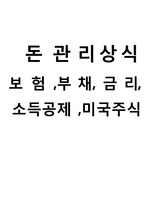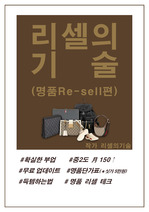STRUCTURAL DETERMINANTS OF THE RATE OF CHANGE OF JAPANESE RETAIL MARKET POTENTIAL: 1991 – 2007
* 본 문서는 배포용으로 복사 및 편집이 불가합니다.
서지정보
ㆍ발행기관 : 글로벌지식마케팅경영학회(GFMC)
ㆍ수록지정보 : Global Marketing Conference
ㆍ저자명 : Charles A. Ingene, Ikuo Takahashi
ㆍ저자명 : Charles A. Ingene, Ikuo Takahashi
영어 초록
Market potential for a line of retail trade within a geographic market has been defined as the difference between (i) actual sales of the line of trade in the geographic market and (ii) potential sales based on the marketing environment, current retailers’ marketing efforts, and competition from related lines of trade and nearby geographic markets (Ingene and Takahashi 2012). In this current research we examine the rate of change of retail market potential in Japan over a sixteen year span (1991-2007).We theoretically address, and empirically estimate, key factors that affect the rate of change of retail sales per household in four major lines of retail trade: frequently purchased consumables (food and drink), less frequently bought non-durables (apparel, shoes and dry goods), and infrequently acquired durable goods that range from moderately costly (furniture) to truly expensive (autos). Information on these lines is drawn from the Japanese Retail Trade Censuses of 1991 and 2007 at the Industrial Classification (IC) level. We examine Dry Goods, Apparel and Accessory stores (largely clothing, shoe, linen and accessories (IC 56; Share of retail trade in 2007: 8%)); Food and Beverage stores (primarily grocery, liquor, and specialty food stores (IC 57; Share of retail trade: 30%)); Furniture, Household Utensils, and Appliances (IC 59; Share of retail trade: 9%); and Motor Vehicles and Bicycle stores (IC 58; Share of retail trade: 12%). Note that because our measure is sales, autos dominate in the IC 58 category. These four lines of trade collectively comprise about 60% (1991: 62%, 2007: 58%) of all retail sales. We previously explored determinants of the absolute value of retail sales per household in these lines of retail trade (Ingene and Takahashi 2013). However, this research deals with the rate of change of retail sales per household. Thus, we explain differences in change of retail market potential among 528 Japanese cities, in all 47 prefectures, that are home to over 75% of Japan’s people. According to our previous study (Ingene and Takahashi 2013), retail sales are determined by three fundamental factors: the Market Environment (which is beyond the control of retail managers), Intertype Competition (which is influenced, but not controlled, by managers in the line of trade), and the Marketing Mix in each line of trade (which is set by managers). The essence of our argument is that the Market Environment determines a base level of rate of change in sales per household. Intertype Competition takes sales away from the focal lines of trade. Finally, the Marketing Mix in each line of trade augments sales (a) by appealing to customers and (b) by countering the negative impact of Intertype Competition.Turning to our empirical model (Figure 1), we include seven variables in the Market Environment that are measured by their rate of change between 1991 and 2007: per capita income, home size in square meters (a proxy for household wealth), population growth, daytime population relative to residential population, auto ownership per capita (a proxy for mobility), distance to the prefecture’s capital city (a proxy for out-shopping), and newspapers per capita. We expect each of these independent variables to increase our dependent variable: retail sales per household.For the Marketing Mix we measure three variables in terms of their rate of change in the same time period: average square meters of selling space per store (a proxy for assortment), employees per square meter of selling space (a proxy for service), and number of stores per 1000 people (a proxy for locational convenience); each of them should increase retail sales per household in its line of trade, but not in other lines (e.g., the marketing mix for Food stores should only affect food sales per household).For Intertype Competition we use General Merchandise Stores (largely department stores and supercenters (IC55; Share of retail trade in 2007: 12%)) that, in Japan, directly compete with Clothing, Furniture and Food stores. We focus on the same three variables (assortment, service, and access); they are expected to be inversely related to the rate of change in sales per household in the lines with which they compete. There is no intertype competition in our Motor Vehicle regressions. In the first stage of our analysis we use the change of the Market Environment to explain the variation in the rate of change in retail sales per household and four lines of trade (i.e., four regressions). The Market Environment generates adjusted R2’s of 2% (Clothing) to 25% (Autos).In our second-stage analysis our dependent variable is the residuals from the first-stage regressions. Here we include the Marketing Mix and Intertype Competition variables as explanatory; they account for 2% (Autos) to 43% (Clothing) of the variation in the first-stage residuals. Taking the two stages together, we are able to explain26% (Autos) to 54% (Food) of the variation in retail sales per capita across the four lines of trade. We make four contributions with our empirical research. First, we investigate data from two censuses that span a sixteen year period; few previous studies have examined changes in retail structure over time (e.g., Hall, et al. 1961). Second, we demonstrate the time-variant stability of the Marketing Mix variables. Third, we show the importance of intertype competition – although in our data it appears that only the Food and Beverage category experiences significant intertype competition. Fourth, we examine retailing in Japan; the world’s third largest economy has rarely been the focus of retail trade studies.참고 자료
없음"Global Marketing Conference"의 다른 논문
 THE ROLES OF GREEN PACKAGING IN UGLY FOOD PURCHASE INTE..22페이지
THE ROLES OF GREEN PACKAGING IN UGLY FOOD PURCHASE INTE..22페이지 THE IMPACT OF INDUCED AWE ON ETHICAL TOURIST BEHAVIORS5페이지
THE IMPACT OF INDUCED AWE ON ETHICAL TOURIST BEHAVIORS5페이지 A BIBLIOMETRIC ANALYSIS OF SPIRITUAL TOURISM RESEARCH15페이지
A BIBLIOMETRIC ANALYSIS OF SPIRITUAL TOURISM RESEARCH15페이지 SOCIAL NETWORK ANALYSIS AND RESPONSE TIME TESTING: CONS..11페이지
SOCIAL NETWORK ANALYSIS AND RESPONSE TIME TESTING: CONS..11페이지 THE EFFECTS OF PARA-SOCIAL INTERACTION ON ONLINE CELEBR..3페이지
THE EFFECTS OF PARA-SOCIAL INTERACTION ON ONLINE CELEBR..3페이지 THE INFLUENCE OF OPINION LEADERS ON DAILY DEALS USER’S ..3페이지
THE INFLUENCE OF OPINION LEADERS ON DAILY DEALS USER’S ..3페이지 HOW IMMERSIVE RETAILING AFFECTS CONSUMERS’ URGE TO BUY:..6페이지
HOW IMMERSIVE RETAILING AFFECTS CONSUMERS’ URGE TO BUY:..6페이지 KEY TO SUPERSTARDOM IN A GLOBALISED MARKET: THE ROLE OF..6페이지
KEY TO SUPERSTARDOM IN A GLOBALISED MARKET: THE ROLE OF..6페이지 A POST-PANDEMIC LOOK AT TOURISTS’ PERCEIVED COOLNESS OF..4페이지
A POST-PANDEMIC LOOK AT TOURISTS’ PERCEIVED COOLNESS OF..4페이지 EXTRACTING OFFLINE RETAIL SHOPPING PATTERNS: OLLABORATI..5페이지
EXTRACTING OFFLINE RETAIL SHOPPING PATTERNS: OLLABORATI..5페이지





















